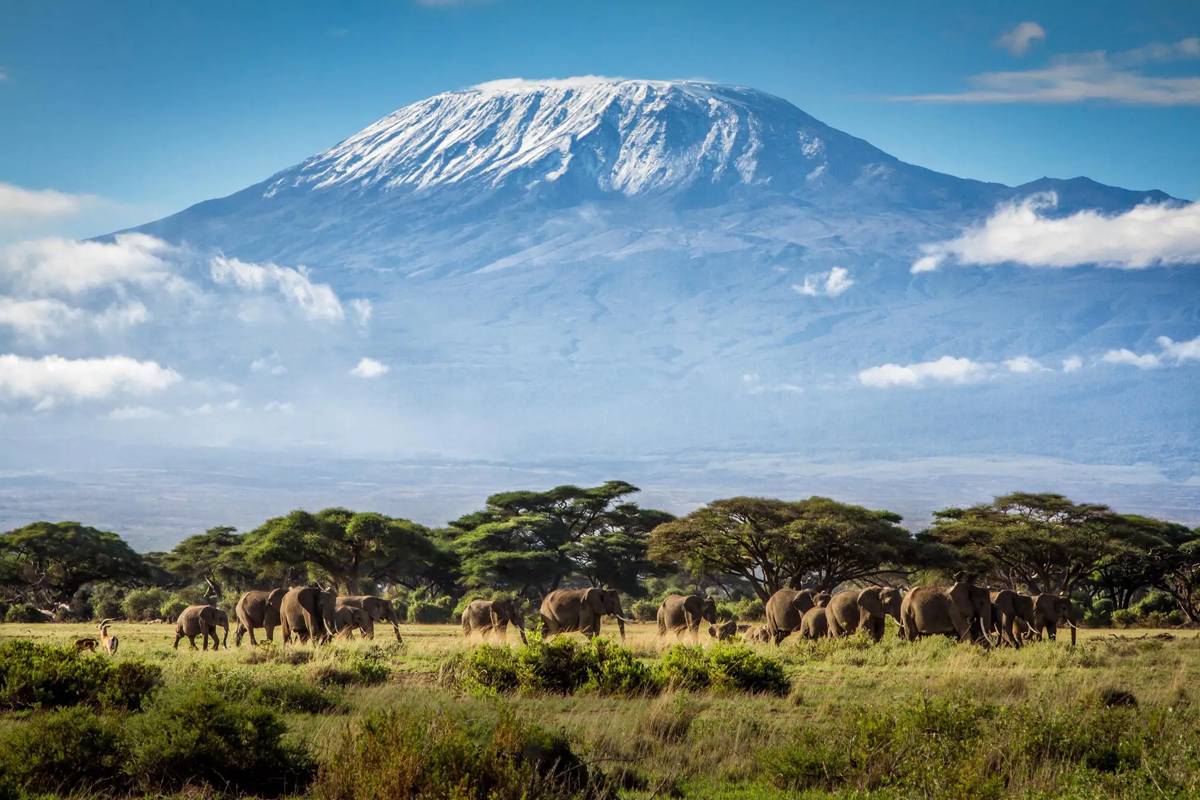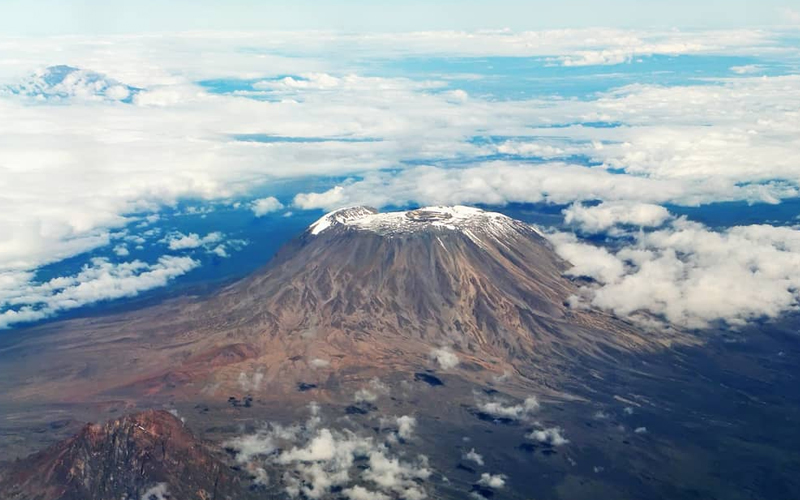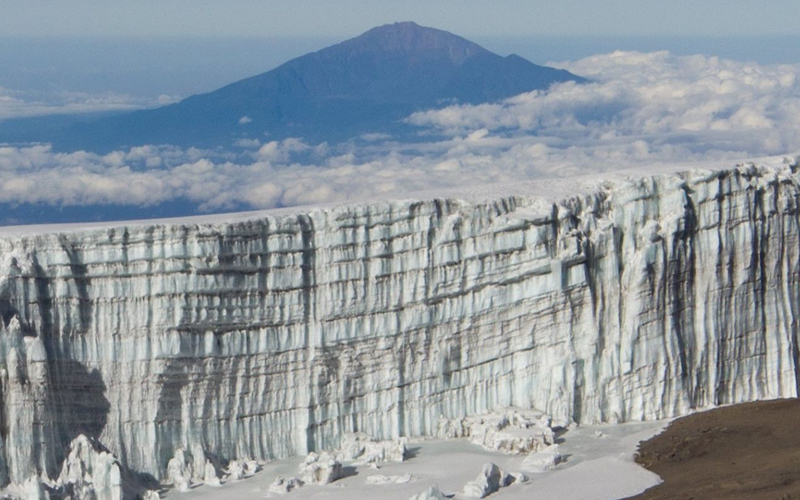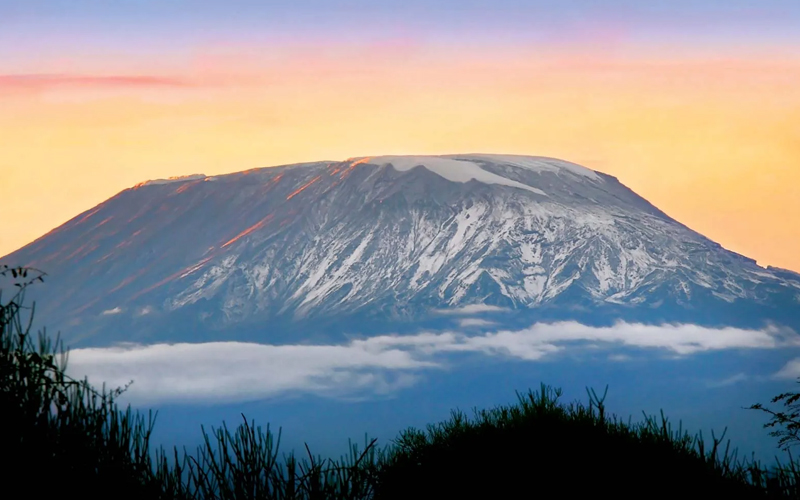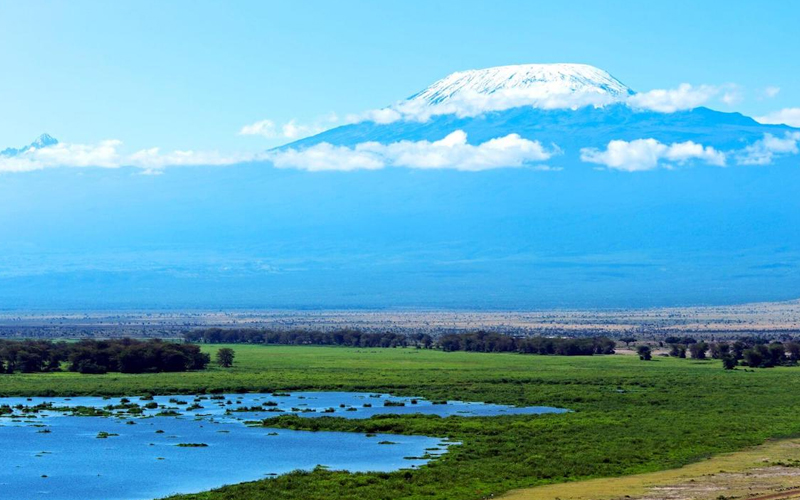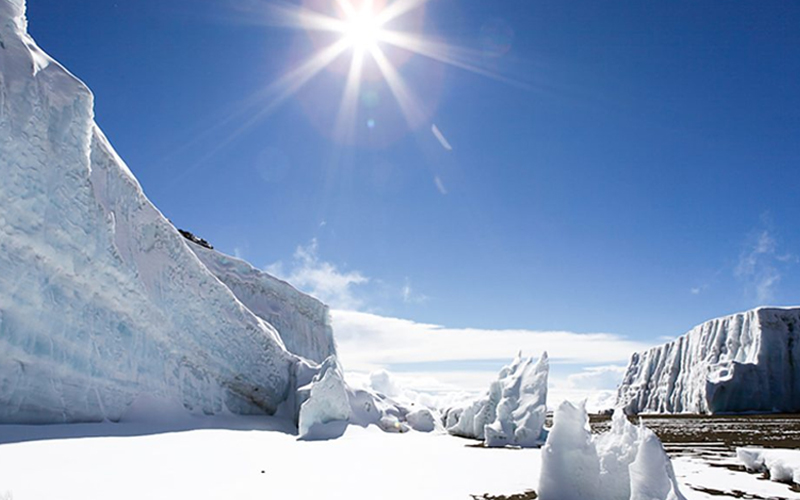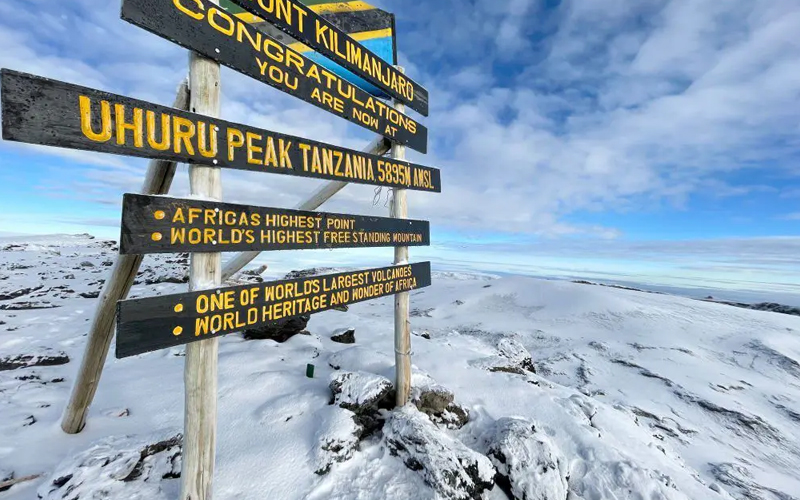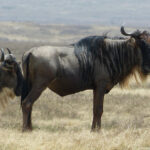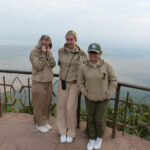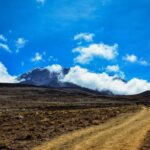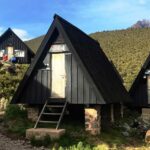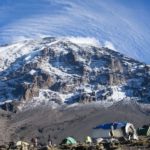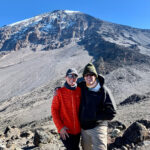Mount Kilimanjaro is a really big mountain in Tanzania, which is in East Africa. It’s super tall and stands high above everything else around it. People from all over the world look at it and think, “Wow, that’s amazing!” That’s because it’s the tallest mountain in Africa!
Imagine this: you’re looking at Kilimanjaro, and you see this white stuff at the very top like someone sprinkled powdered sugar on it. But guess what? That’s not sugar, it’s snow! Can you believe it? Snow on a mountain in Africa! It’s like a magical sight that catches everyone’s attention.
Now, let’s take a trip together to learn more about this incredible mountain. We’ll dive into its story, its past, and why it’s so important to the people who live near it. Get ready for an adventure!
Exploring the Magnificent History of Mount Kilimanjaro
The Geological Story of Kilimanjaro
Once upon a time, way, way back in history, something amazing was happening deep down under the ground. It was like a big cooking pot simmering with hot stuff. This hot stuff, called molten rock, slowly moved up and up, until one day, it burst out and formed Mount Kilimanjaro.
But Kilimanjaro wasn’t just one big bump. Oh no! It had three parts, like three scoops of ice cream stacked on top of each other. These parts are called cones, and they’re named Kibo, Mawenzi, and Shira. Over many, many years, these cones shaped Kilimanjaro into the mountain we see today. It’s like a giant sculpture made by nature’s hand, showing off the Earth’s amazing power.
Cultural Heritage and Indigenous Communities
Imagine going back in time, way back, when people lived close to Kilimanjaro, making it their home sweet home for hundreds and hundreds of years. These folks were part of special tribes, like the Chagga people. They weren’t just living near the mountain; they were practically neighbors!
Now, let’s talk about the Chagga. They’re like the guardians of Kilimanjaro, watching over it for ages. To them, Kilimanjaro isn’t just a big ol’ pile of rocks; it’s like a superhero in their stories, a symbol of something sacred and special.
Picture this: families sitting around a cozy fire, telling tales about Kilimanjaro and its magic. These stories aren’t just bedtime fairytales; they’re a big part of the Chagga’s way of life. They teach important lessons and connect everyone to their past, present, and future. So, when you look at Kilimanjaro, remember, that it’s not just a mountain; it’s a treasure chest full of stories and traditions, kept safe by the Chagga and other tribes.
European Exploration and Discovery
Let’s hop in a time machine and zoom ahead to the 1800s. Back then, Europeans were like brave explorers, setting off on daring adventures to places far, far away. One of their big quests was to explore Africa, to see what secrets it held.
Now, picture this: a group of explorers trekking through the wild, untamed lands of Africa. Suddenly, they stumble upon something incredible: Kilimanjaro! Its peak is like a beacon in the sky, covered in snow, shining like a diamond. Can you imagine their excitement? It’s like finding a hidden treasure!
Word of this amazing find spread like wildfire across Europe. People couldn’t believe that such a majestic mountain existed in Africa! It sparked the curiosity of adventurers, scientists, and just about everyone else. They wanted to know more, to see it with their own eyes, and maybe even climb to the tippy-top! And so, Kilimanjaro became not just a wonder of nature, but a symbol of adventure and discovery.
Mapping and Scientific Study
Picture this: a team of adventurous scientists packing their bags full of notebooks, maps, and magnifying glasses. Their mission? To unlock the secrets of Kilimanjaro!
These brave explorers weren’t just satisfied with admiring the mountain from afar; oh no, they wanted to get up close and personal. Armed with their tools and curiosity, they set off on expeditions to study every nook and cranny of Kilimanjaro.
First things first: they whipped out their maps and started tracing the mountain’s every curve and bump. Then, they put on their explorer hats and went on a scavenger hunt for rocks, plants, and critters. They were like detectives, piecing together clues about Kilimanjaro’s past and present.
But their work wasn’t just about satisfying their curiosity; it was also about protecting this natural wonder for future generations. By understanding Kilimanjaro inside and out, these scientists laid the groundwork for conservation efforts. They showed us that to save something precious, we first need to understand it. And so, thanks to their tireless efforts, Kilimanjaro became not just a mountain, but a beacon of scientific discovery and conservation.
Rise of Kilimanjaro Tourism
Imagine this: the world getting smaller and smaller as people from different corners start to connect like never before. And guess what? Kilimanjaro caught everyone’s eye!
With planes zooming through the sky and roads stretching farther than ever, adventurers from all over packed their bags and headed to Tanzania. Why? To conquer Kilimanjaro, of course! It became the ultimate challenge, like climbing to the top of the world.
But here’s the thing: climbing a big ol’ mountain isn’t easy. So, smart folks built roads and places to stay, making it easier for eager climbers to reach their dream destination. Suddenly, Kilimanjaro wasn’t just for the super brave; it was for anyone with a spark of adventure in their heart.
And just like that, Kilimanjaro became a hot spot for tourists. People came from all over, with their cameras and hiking boots, ready to tackle Africa’s highest peak. It was like a big party, with everyone cheering each other on as they took one step closer to the sky. So, if you ever feel like testing your limits, why not join the fun and conquer Kilimanjaro?
Conservation and Preservation Efforts
Let’s travel back to 1977 when a group of nature lovers came together with a big idea: to keep Kilimanjaro safe and sound for generations to come.
They knew that Kilimanjaro wasn’t just a big rock; it was a home for all sorts of plants and animals, each one playing a special role in the mountain’s ecosystem. So, they rolled up their sleeves and got to work.
Their first step? Creating Kilimanjaro National Park, like a big green blanket wrapping around the mountain, protecting it from harm. Inside this park, animals could roam freely, and plants could grow without fear of being trampled. It was like a haven, where nature could thrive.
But that was just the beginning. Conservationists kept busy, coming up with all sorts of clever ideas to keep Kilimanjaro happy and healthy. They taught visitors how to be gentle with the mountain, to leave nothing but footprints, and to take nothing but pictures. They even found ways to make tourism kinder to the environment, like using eco-friendly lodges and guiding hikers along sustainable trails.
Thanks to their hard work, Kilimanjaro is still standing tall and proud, a shining example of what can happen when people come together to protect something they love. And with their ongoing efforts, we can be sure that Kilimanjaro will stay a wild and wonderful place for many, many years to come.
Climate Change Challenges
Imagine a big, invisible blanket slowly wrapping around Kilimanjaro, making it warmer and warmer. That’s what climate change is doing to our beloved mountain.
You see, Kilimanjaro used to wear a beautiful crown of snow and ice, like a king ruling over the land. But now, that crown is starting to melt away, disappearing faster than anyone thought possible. It’s like watching a magic trick gone wrong, with the snow and ice vanishing before our very eyes.
If things keep going the way they are, Kilimanjaro’s snowy summit might become nothing more than a memory. And that’s a big problem, not just for the mountain, but for all of us. It’s like a warning sign, telling us that we need to do something, and fast!
That’s why we need to join hands and take action against climate change, like planting more trees, using less energy, and finding cleaner ways to do things. Because if we don’t, Kilimanjaro won’t be the only thing we lose; we’ll lose a piece of our planet’s heart and soul.
Kilimanjaro: A Symbol of Resilience
Even in the face of tough times, Mount Kilimanjaro stands strong, like a superhero facing down its enemies. Its majestic peak isn’t just a sight to behold; it’s a reminder of the power of nature and the beauty that surrounds us.
When we look at Kilimanjaro, we see more than just a mountain; we see hope. It’s like a guiding light, showing us that no matter how hard things get, there’s always something worth fighting for. It’s a call to action, urging us to roll up our sleeves and protect the precious gifts our planet gives us.
So, as we stand in awe of Kilimanjaro’s grandeur, let’s make a promise. Let’s promise to be good stewards of this Earth, to cherish its wonders, and to do everything in our power to keep them safe. Because just like Kilimanjaro, our planet is a treasure worth preserving for generations to come.
Mount Kilimanjaro’s history is a tapestry woven with threads of geological wonder, cultural significance, and human exploration. From its ancient origins to its modern-day challenges, Kilimanjaro continues to captivate and inspire all who behold its majestic beauty. As stewards of this magnificent mountain, it is our collective responsibility to ensure that its legacy endures for centuries to come.
Explore Tanzania’s beautiful national parks, like the famous Serengeti, where you can see lots of animals moving around, and the Ngorongoro Crater, a safe place for many different animals. Don’t forget to climb Kilimanjaro, the highest mountain in Africa, and see its amazing views. After that, relax on the pretty beaches of Zanzibar, with its clear blue water and soft white sand. Come join us for a special safari trip in Tanzania and see how wonderful this country is!

